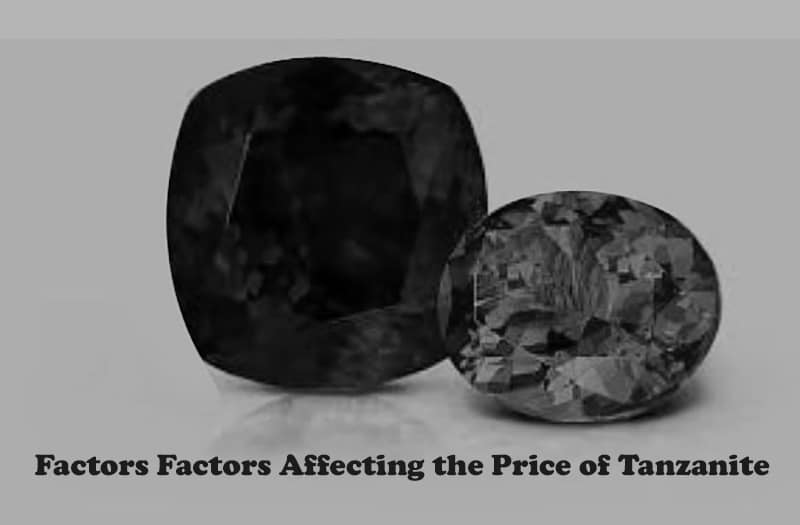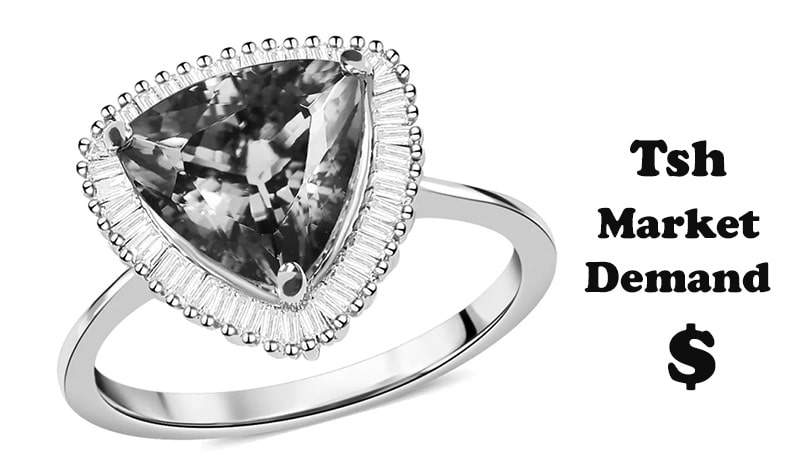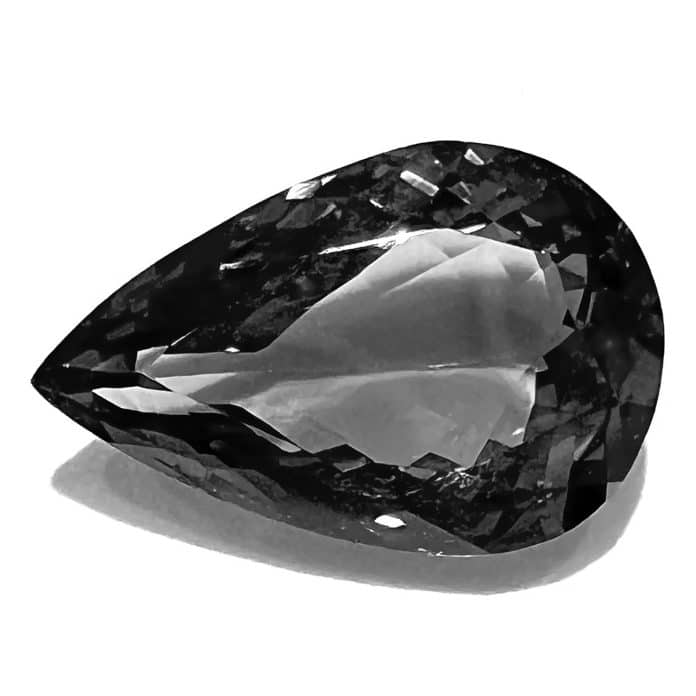From the Mines of Tanzania to Your Jewelry Box: Exploring the Factors that Determine Tanzanite Stone Price
Step into the dazzling world of Tanzanite, a gemstone that has captured the hearts of jewelry enthusiasts around the globe. From its inception in the depths of Tanzanian mines to finding its way into your jewelry box, the journey of this precious stone is as fascinating as its alluring blue hue. But have you ever wondered what determines the Tanzanite stone price in Tanzania? Join us on a captivating exploration as we delve into the factors that shape the value of this gemstone. From the rareness of its occurrence to the clarity, color, and carat weight, there are numerous elements that contribute to the Tanzanite stone’s price tag. Uncover the secrets behind the pricing of this magnificent gem and gain a deeper appreciation for the craftsmanship and natural beauty that make Tanzanite a truly coveted treasure. Whether you’re a gemstone enthusiast or simply curious about the world of jewelry, this enlightening journey will leave you mesmerized by the enchanting allure of Tanzanite.
What Factors Affect the Price of Tanzanite?

Tanzanite, a gemstone found exclusively in Tanzania, is known for its unique blue-violet hue and mesmerizing beauty. However, the price of Tanzanite can vary greatly depending on several factors. Understanding these factors is key to appreciating the value and rarity of this gemstone.
Tanzanite Grading System
To determine the quality and value of Tanzanite, gemologists use a grading system that evaluates the stone based on various criteria, including color, clarity, cut, and carat weight. This grading system provides a standardized way to assess Tanzanite’s quality and helps determine Tanzanite stone price in Tanzania.
Color and Its Impact on Tanzanite Price
The color of Tanzanite plays a crucial role in determining its value. The most desirable Tanzanite stones exhibit a vivid blue color with a hint of violet. These stones, known as “AAA” grade Tanzanite, command the highest prices in the market due to their exceptional color saturation. As the intensity of the blue hue decreases or if the stone exhibits any brown or yellowish tones, the value of Tanzanite decreases. The presence of violet hues can also affect the price, as stones with a stronger violet component are considered more valuable.
Clarity and Its Influence on Tanzanite Price
One other feature that heavily influences Tanzanite stone price in Tanzania is clarity. Clarity refers to the absence of internal or external flaws in a Tanzanite stone. Like other gemstones, Tanzanite is evaluated using a clarity grading system that ranges from “eye-clean” to “included.” Stones with minimal to no visible flaws are considered more valuable and command higher prices. However, it is essential to note that Tanzanite commonly exhibits a phenomenon known as pleochroism, where different colors are visible from different angles. This natural characteristic does not affect the stone’s clarity grade but adds to its unique appeal.
Cut and Its Role in Determining Tanzanite Price
The cut of a Tanzanite stone refers to its shape, proportions, and overall finish. A well-cut Tanzanite stone enhances its brilliance, sparkle, and overall beauty. The most popular cut for Tanzanite is the cushion cut, which maximizes the stone’s color and brilliance. Other popular cuts include oval, round, and emerald cuts. Stones with excellent cut grades are more valuable and often command higher prices due to their superior light reflection and overall visual appeal.
Carat Weight and Its Effect on Tanzanite Price
Carat weight refers to the size and weight of a Tanzanite stone. This size and weight factor are major determinants of Tanzanite stone price in Tanzania. As with other gemstones, larger Tanzanite stones are rarer and, therefore, more valuable. However, the price per carat does not increase linearly with size. Larger stones are much harder to find, making them more valuable, but the price per carat tends to increase exponentially as the carat weight increases. This is because larger Tanzanite stones are in higher demand and are considered more prestigious.
Market Demand and Tanzanite Price Fluctuations

Market demand plays a significant role in determining the price of Tanzanite. Like any other commodity, the laws of supply and demand apply to this gemstone. When demand is high and supply is limited, prices tend to rise. Conversely, when demand decreases or when there is an oversupply of Tanzanite in the market, prices can decline. Factors such as economic conditions, fashion trends, and marketing efforts also influence the demand for Tanzanite, leading to price fluctuations over time.
Tanzanite Pricing Trends and Historical Data
To gain a better understanding of Tanzanite pricing, it is essential to analyze historical data and trends. Over the years, Tanzanite stone price in Tanzania have experienced significant fluctuations due to various factors. One notable event that impacted Tanzanite pricing was the discovery of new Tanzanite deposits in the late 1990s, which led to a temporary drop in prices. However, as the newly discovered mines became depleted, prices stabilized and began to rise again. Understanding the historical context of Tanzanite pricing can help buyers make informed decisions and anticipate future trends.
How to Buy Tanzanite at a Fair Price
When purchasing Tanzanite, it is important to ensure that you are getting a fair price for the stone’s quality and rarity. Here are a few tips to consider:
- Educate yourself: Learn about the factors that determine Tanzanite’s value, such as color, clarity, cut, and carat weight. This knowledge will enable you to assess the quality of a stone and make an informed decision.
- Buy from reputable sources: Purchase Tanzanite from trusted and reputable jewelers or dealers who can provide proper certification and guarantees of authenticity.
- Compare prices: Shop around and compare prices from different sellers to get an idea of the market value for Tanzanite. Be wary of significantly lower prices, as they may indicate low-quality or synthetic stones.
- Seek professional advice: If you are unsure about the value or quality of a Tanzanite stone, consult with a gemologist or jewelry expert who can provide guidance and help you make an informed purchase.
By following these guidelines, you can ensure that you are buying Tanzanite at a fair price and getting the best value for your investment.
Conclusion
Tanzanite, with its mesmerizing blue-violet hue and unique origin, is a gemstone that holds a special place in the world of jewelry. However, the tanzanite stone price in Tanzania is influenced by several factors, including color, clarity, cut, carat weight, market demand, and historical trends. Understanding these factors is crucial for both buyers and enthusiasts, as it allows for a deeper appreciation of the gemstone’s value and rarity. By considering the factors that determine Tanzanite’s price and following the tips for purchasing at a fair price, you can embark on your own journey into the enchanting world of Tanzanite, confident in your ability to appreciate and acquire this captivating gemstone.
For more related articles on Manufacturing and Business in Tanzania (Trade) click here!

































